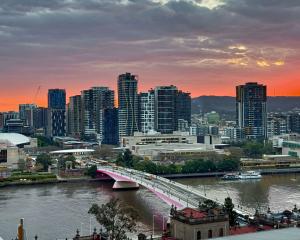
Cairo is a crazy city, where drivers make six lanes out of a four-lane road, spend more time looking in their mirrors than at the way ahead, and alert other drivers to their presence by a series of horn toots, one short, two long, and others each with their own meaning.
It is where the Nile resembles an open sewer in parts, and where handcarts, donkeys and fat-tailed sheep make other city roads look like farm tracks.
It is where the locals are experts in removing from the unsuspecting tourist his every last Egyptian pound, by any means possible.
And yet it is a wonderful, exciting city with enormous history, and where the Step Pyramid of King Zoser can be found, built some 5000 years ago, preceding those at Giza and the pyramid built by Cheops by many centuries.
And then there is the mighty Sphinx.
In the Cairo Museum can be found the treasures from the boy king Tutankhamun.
Then there are the many mosques and bazaars throughout the city.
Luxor is a laid-back, friendly city standing on the east bank of the Nile, on the site of the ancient city of Thebes.
With its large number of ancient temples (e.g.
Karnack), monuments and tombs, it can be described as perhaps the greatest open-air museum in the world.
Across the Nile on the west bank lies the Valley of the Kings, where you will find the tombs of the Theban rulers, including Tutankhamun, King Seti and others.
You may also see the Mortuary Temple of Hatshepsut, the only woman pharaoh to rule ancient Egypt.
At Edfu-Kom Ombo,you can view the Temple of Horus and houses of the Byzantine period.
Then the famous Kom-Ombo temple, completed during the reign of Ptolemy VI (181BC-146 BC).
This temple was shared by two gods, Sobek and Haroeris.
Aswan is Egypt's sunniest southern city, located 100km south of Luxor.
This is where the Nile flows through amber desert and granite rocks, round emerald islands covered in palm groves, and where the waters can be crowded with Nile cruisers and feluccas (Egyptian sailboats).
Of all the temples of Egyptian antiquity, among the most spectacular and best preserved are the temples of Abu Simbel.
The master builder was Ramses II (1279BC-1213BC), one of Egypt's greatest pharaohs.
The larger temple celebrates the pharaoh himself, while the smaller one honours his wife, Queen Nefertari.
When the Lake Nasser Dam was built in the 1960s, the temples were moved to save them from a watery grave.
In an amazing feat of engineering, the temples were hewn into huge blocks of 30 tonnes each and relocated higher and further inland.
To visit and see for yourself these world wonders, and others in this fascinating country, is an uplifting experience, even for one such as myself who is not an accomplished Egyptologist by any means.
But I could not help but be drawn into ancient history and to gain some idea of how the modern world has been influenced by these ancient cultures. - Morgan Hewland












